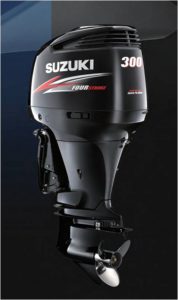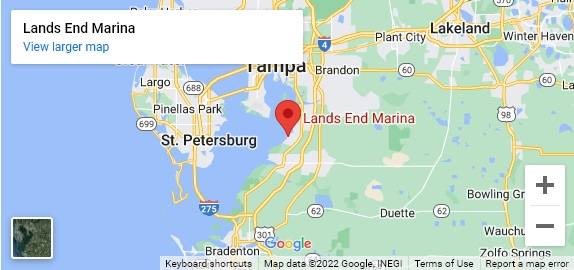 The propeller on your motor does more than just make the boat go where you point it. It makes all the difference in performance, engine longevity, and handling. The best choice for a propeller will vary in application from boat to boat and even on the same boat setup depending on how you use it. There are too many variables to prop selection to completely cover it in this article so we will stick with the basics. These guidelines are aimed towards outboards and I/O boats.
The propeller on your motor does more than just make the boat go where you point it. It makes all the difference in performance, engine longevity, and handling. The best choice for a propeller will vary in application from boat to boat and even on the same boat setup depending on how you use it. There are too many variables to prop selection to completely cover it in this article so we will stick with the basics. These guidelines are aimed towards outboards and I/O boats.
Materials
One of the first choices in picking the right prop is choosing a material. The two most common are aluminum and stainless steel.
The advantage of aluminum is price. Aluminum props are considerably less expensive but you give up performance and durability. Aluminum will flex under a load. For fast boats, you will lose some speed by switching to an aluminum prop of the same size.
Due to this flex, when switching from aluminum to stainless, you should reduce the pitch of the propeller by 2″. Aluminum is considerably softer than stainless, any time you make contact with the bottom or a submerged object you will do more damage to the prop. Depending on the amount of damage to the prop, it can usually be rebuilt by a prop shop. Props can be rebuilt more than once, as long as quality aluminum or stainless is used in the repair. For this reason, it is important to use a reputable prop shop.
With the exception of little outboard motors, the most common material used for propellers in coastal areas or shallow freshwater lakes is stainless steel. Stainless steel is much more durable and retains its shape under a load which results in better performance. Some people shy away from stainless because they believe that if you hit something you are more likely to damage the gearcase. However, both props have the same hub in the center that is designed to break away in the event of a severe impact, thus saving the gearcase from damage. If you do hit something hard enough both hubs will shear at the same time. The aluminum prop will sustain more damage from the impact. The benefits of stainless far outweights the small possibility of damaging engine components.
Size & Pitch
Once you have decided the best material for your application the next choice is propeller size. Generally speaking, the diameter of the prop is chosen for you.
The space between the skeg and the cavitation plate will only accept a certain size prop. When you look up propellers for your motor there will be a limited selection of diameters available and they are usually tied to the pitch. When it comes to most boats, pitch is the most important aspect of a prop. The pitch is the curvature of the blade and determines everything from holeshot and top end RPM’s to staying on a plane a cruising speeds. Pitch is measured in inches. The type of hull and the amount of lift that the hull gets will determine the range of pitches for a particular boat.
The best way to determine the right prop on most boats is to pick one that will reach the engine manufacturers wide open throttle RPM with YOUR normal load in the boat. This is easy to do if you have a tachometer in the boat.
- Go out on a nice day with a full tank of fuel and the normal amount of people and gear.
- Run the boat wide open, trimmed out handle on the dash wide open, and record the number of RPM’s the motor will turn. This number can then be compared to the recommended wide open throttle RPM’s for your motor. You can determine if the prop is right or more importantly how much of a pitch change you need to get the right prop.
- If the boat is not turning enough, in most cases, you would reduce the pitch.
- If it is over revving than you would increase it.
- There is a general formula for figuring RPM’s to inches of pitch. The shop you purchase your prop from should be able to do the math for you.
You prop a motor for the boat it is being used for. That is why engine manufacturers don’t ship props with larger motors. Boat manufacturers typically pick a prop that will work okay in most applications. They have no way of knowing exactly how you are going to use the boat so they cannot put the perfect prop on it. Two people who buy the exact same boat and motor, but use it differently, will most likely benefit from different props.
An example would be if Jim and Jack both bought the same 22 foot bay boat with the same 200 horsepower outboard on the back of it. Jim just uses his to fish usually with one other guy and some tackle. Jack uses his to take his family of five out to the island for the day. He carries a lot more stuff in the boat and had a t-top added to give the family somewhere to get out of the sun. Both boats came with the same propeller when they left the dealership but Jim’s boat will turn up 6000 RPM’s wide open and run 50 mph. Jacks boat will now only turn up 4900 RPM’s and run 44 mph. The difference is how they use it. Because Jack’s boat carries a lot more weight he needs to change his propeller for one with less pitch that will get his RPM’s back up where they should be at wide open throttle and he will regain the majority of the lost speed.
Within reason the lower the pitch of a propeller, the flatter the blade. A flatter blade will turn up more RPM’s. Every engine has a recommended wide open throttle RPM range. You should prop your motor to run at the top of the RPM range. This has more benefits than just getting the most speed out of the boat. Performance works like a set of stairs. If it is propped for wide open throttle you will get the best mid range cruising RPM, and the best hole shot. Propping a boat for wide open throttle with your normal load will give you the best all around performance.
Lugging
One of the biggest reasons to make sure your boat will turn wide open throttle is because over time you can actually damage a motor but turning too few wide open throttle RPM’s. The common term for this is called “lugging”. Lugging a four stroke motor can cause valve damage. This is due to increased cylinder temps and can “tulip” or change the shape of a valve. Misshapen valves cause low compression and reduced power in a motor. This condition is due to the motor getting wide open throttle spark, air, and fuel but not wide open throttle RPMs. It is more common in I/O boats but any four stroke motor can fall victim to the condition.
There are so many variables in propeller selection that this is just the tip of the iceberg. We haven’t even discussed in this article cup, rake, and blade configuration. That being said, the majority of boaters will be able to pick a good propeller by following a few guidelines.
First pick the material that is right for you based upon your budget and motor. Second pick the propeller that allows you to turn the right wide open RPMs for your motor with your normal load and a full tank of fuel. Finally, keep your prop in good condition. If it’s damaged have it reconditioned by a good prop shop. By doing these few things, you will make both you and your motor happy for years to come.



